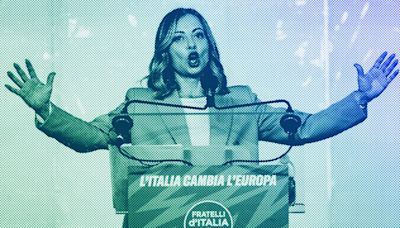Search results
- European Union (EU), international organization comprising 27 European countries and governing common economic, social, and security policies. Originally confined to western Europe, the EU undertook a robust expansion into central and eastern Europe in the early 21st century.
www.britannica.com › topic › European-UnionEuropean Union (EU) | Definition, Flag, Purpose, History ...
People also ask
What countries are in Central Europe?
How many countries are in the EU?
What does Central Europe mean?
Which countries occupied Central Europe?
Today the EU consists of 27 member countries. It is not only an economic union but the single market with no borders for trade and the single euro currency used by 20 member states of the Eurozone. Furthermore, it is the political union with own parliament and other institutions.
- Countries of Europe
Europe's largest country is Russia (37% of total continent...
- How Many Countries
The list may go on, but there are two exceptions: Taiwan is...
- World's Largest Countries
Note that the list below includes only officially recognized...
- Countries of Australia and Oceania
List of countries in Australia / Oceania The smallest...
- World's Richest Countries
Top 50 richest countries in the world. How to determine how...
- World's Top Universities
World's Top 50 universities. Every year, thousands of...
- Countries of Europe
According to Meyers Enzyklopädisches Lexikon, Central Europe is a part of Europe composed of Austria, Belgium, the Czech Republic, Slovakia, Germany, Hungary, Luxembourg, Netherlands, Poland, Romania and Switzerland, and northern marginal regions of Italy and Yugoslavia (northern states – Croatia and Slovenia), as well as northeastern France.
- Contemporary Central Europe
- A Brief History of Central Europe
- Central Europe Today
In a way, Central Europe is the crossroads of the continent. It is where elements of Western European and Eastern European cultures meet. From a linguistic perspective, Poland, the Czech Republic, Slovakia, and Slovenia each have their own languages, though they are all Slavic languages. German is spoken in Germany, Austria, Switzerland, and Liecht...
The history of what we now know as Central Europe arguably begins with the birth of the Holy Roman Empire. The empire was first created in 800 CE, when Pope Leo III crowned the Frankish king Charlemagne emperor of the Romans, thus restoring the title that had been vacant since the fall of the West Roman Empire in 476. At the time, the Holy Roman Em...
Since the 1990s, Central Europe has been swept up in the process of European integration. Hence, all the countries of present-day Central Europe, excluding Switzerland and Liechtenstein, are part of the European Union (EU). Most Central European countries are also part of the NATOmilitary alliance. In the last few years, however, the popularity of ...
EU11 is used to refer to the Central, Southeastern Europe and Baltic European member states that joined in 2004, 2007 and 2013: in 2004 the Czech Republic, Estonia, Hungary, Latvia, Lithuania, Poland, the Slovak Republic, and Slovenia; in 2007 Bulgaria, Romania; and in 2013 Croatia.
The European System of Central Banks (ESCB) consists of the ECB and the national central banks (NCBs) of all 27 member states of the European Union. The ESCB is not the monetary authority of the eurozone, because not all EU member states have joined the euro.
Dec 28, 2021 · The evolution of what is today the European Union (EU) from a regional economic agreement among six neighboring states in 1951 to today's hybrid intergovernmental and supranational organization of 27 countries across the European continent stands as an unprecedented phenomenon in the annals of history.

